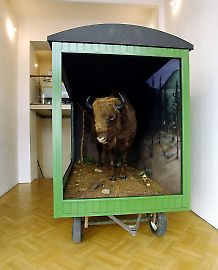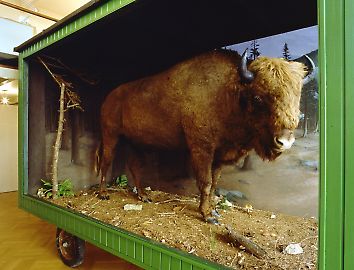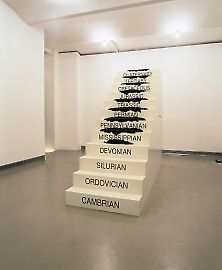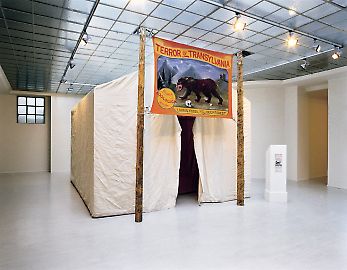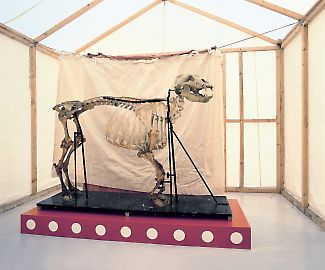Mark Dion --
The American artist Mark Dion explores the visual representation of nature and the history of the natural sciences. He often works together with scientists, also realizing his installations, sculptures, performances, films, or videos in institutions outside the world of art, like natural history collections. [...] He sees natural historical museums as sites where academic findings about nature are presented to a wide audience and at the same time insight is given into a fixation of natural phenomena that (nevertheless) does not correspond to the actual course of nature. The “truths” presented to the audience are critically questioned, ironized, but also constructively renewed in Dion’s work. Dion questions the value criteria of the museum, museum-scientific work, and the expectations of visitors. While his work is closely tied to the natural sciences, it also makes use of strategies of irony, allegory, and humor. [...]
Dieter Buchhart: You often work with stuffed animals and biological specimens. What do these stand for in works like Tars and Feathers or Concrete Jungle?
Mark Dion: People were really shocked by the representation of violence in Tars and Feathers. They aren’t just stuffed animals, but they are hung and coated with tar. The sign of violence is thus very concrete; something you wouldn’t think of if you saw the stuffed animals in natural poses. […] In this work, the issue is the question of violence.
D.B.: What role does aesthetics play in your three-dimensional objects and installations?
M.D.: [...] Curiously, aesthetics is banned from science, because science is understood as objective. But of course we know that aesthetics plays an important role in the sciences. […] The characters in my work are often from the nineteenth century or the US colonial period. They point to a certain time, but they are still no indication of what the scientists actually do, but what people think scientists do.[...]
D.B.: What are you planning for your individual exhibition at Georg Kargl Fine Arts in Vienna?
M.D.: The work Park (Mobile Wilderness Unit) is a mobile diorama, and is concerned with the European idea of wilderness, something quite different than the American notion. We’re making a diorama that represents this kind of European wilderness in a kind of mobile home that can be moved from place to place. It could be brought to a new city, or a social housing settlement, and there communicate the essence of wilderness. Instead of taking nature out of its context and transferring it into a natural history museum, we are moving forward and returning nature to the social sphere. We are bringing the museum to the people. Another work is based on an eighteenth century experiment on the study of the flow pattern of glaciers. In this work, I crossed a work by Robert Smithson#1# with this experiment, allowing asphalt to flow down a stairway. This will progress slowly for the next three hundred years. These are two key works of this exhibition. It will bring together some projects that I’ve thought about for a long time, but never had the opportunity to realize.
(1) Robert Smithson, Asphalt Rundown, Rome 1996
Dieter Buchhart, "Meine Werke sind nicht über Natur, sondern über die Idee von Natur," interview with Mark Dion in: Kunstforum 157 (2001), pp. 185-198.


